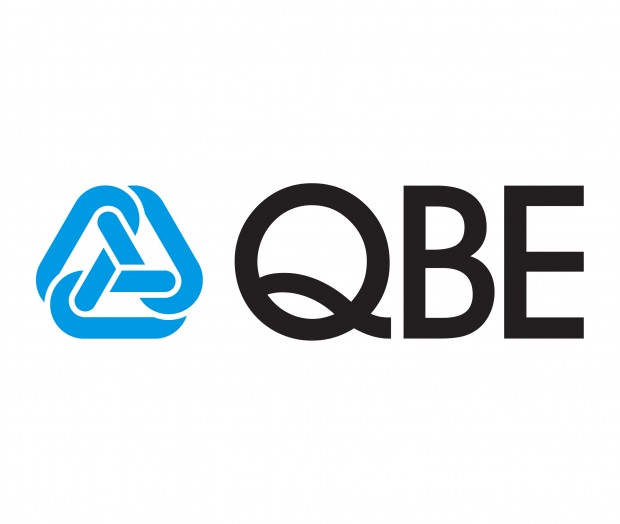QBE Insurance Group Ltd.’s John Neal is shoring up the insurer’s balance sheet by selling shares and assets. He still has work to do convincing bond investors that business is improving after three profit warnings in two years.
QBE debt is the fourth most expensive to protect against nonpayment in the 25-member iTraxx Australia credit-default swap index, even as Neal’s plans sent the cost to a two-month low. While the company sees its credit metrics improving to a standard matching an A+ rating at Standard & Poor’s, two steps above its current grade, its CDS are twice as costly as BHP Billiton Ltd.’s, the only A+ issuer in the benchmark index.
Neal, who took over as chief executive officer in August 2012, plans to raise $1.5 billion over two years by selling shares and offloading assets, including a partial float of its mortgage insurance business. QBE, Australia’s largest insurer by premium income, posted its first annual loss in over a decade in 2013 and has issued profit warnings amid writedowns in the U.S. and provisions in Latin America.
QBE’s main priority “is cleaning up and dealing with the operational elements in North America and the like, so that’s where they need to focus going forward and that’s probably where the main risk is from a credit perspective,” Scott Rundell, chief credit strategist at Commonwealth Bank of Australia in Sydney, said in an Aug. 22 interview. “From a balance sheet perspective it’s improving and it’s doing the right things.”
American Woes
Sydney-based QBE operates in 43 countries after more than 135 acquisitions since 1982, according to its website. The company earns about three-quarters of its premiums outside Australia and New Zealand.
The North American unit, its second-largest source of premiums, posted a $7 million pre-tax loss oninsurance activities in the six months through June, compared with an $89 million profit a year earlier, according to an Aug. 19 filing. Latin America posted a $136 million insurance loss. Both units helped drag first-half profits 18 percent lower.
The insurer unveiled a $750 million equity raising last week and will cancel $500 million of convertible debt with the proceeds. QBE also said it would seek partners for two Australian units and sell businesses in Europe and the U.S. The company plans a 2015 initial public offering for its mortgage insurance unit with about $1.2 billion in net tangible assets.
Better Rating
QBE aims to boost its capital level to as much as 1.9 times the minimum required from 1.56 as of June 30, according to the filing. The company wants to shrink its debt-to-equity ratio to as low as 25 percent from the current 38.4 percent.
“We’ve looked at this as an opportunity to reset the way we approach our balance sheet, both to have higher and more resilient capital levels and to substantially improve our rating agency metrics,” Patrick Regan, QBE’s chief financial officer, said on an Aug. 19 conference call. “We believe that we have what will be a healthy buffer in excess of an A+ rating on S&P as an example.”
Moody’s Investors Service already ranks QBE two levels below S&P. The ratings firm dropped the insurer to Baa2 from Baa1 in December to reflect weakened profitability, internal capital generation and debt service coverage.
Default swaps on QBE debt were at 122 basis points on Aug. 25, 1 basis point higher than last week’s low, which matched a four-year low touched in June, according to CMA prices. Gaming operator Crown Resorts Ltd., rated two levels lower than QBE by S&P, was the next worst in the iTraxx index at 121 basis points, while BHP contracts were at 60 basis points.
Default Risk
QBE has a 0.18 percent probability of defaulting on its debt in the coming year, down from as high as 0.27 percent in December, according to a Bloomberg model of default-risk that considers factors such as share performance and debt. The insurer’s model default probability is in line with the ninth- highest investment grade credit rating. QBE has the ninth- highest score at Moody’s and the seventh-highest at S&P.
“Achieving an A+ rating quickly is ambitious” and “it would probably take at least a couple of disciplined years,” Simon Fletcher, a senior credit analyst at National Australia Bank Ltd. in Sydney said by phone. “The group might be stretched too far, being active in so many countries and markets where it can experience a host of unforeseen negative events that could delay this target.”





















 Is the AI Boom a Bubble Waiting to Pop? Here’s What History Says
Is the AI Boom a Bubble Waiting to Pop? Here’s What History Says  Insurance Costs, Climate Concerns Factor Heavily in U.S. Home Buying Decisions
Insurance Costs, Climate Concerns Factor Heavily in U.S. Home Buying Decisions  NOAA Announces Latest AI-Driven Global Weather Models
NOAA Announces Latest AI-Driven Global Weather Models  Underwriter, Actuary Fears of AI Drop; Work Needed on Collaboration
Underwriter, Actuary Fears of AI Drop; Work Needed on Collaboration 

